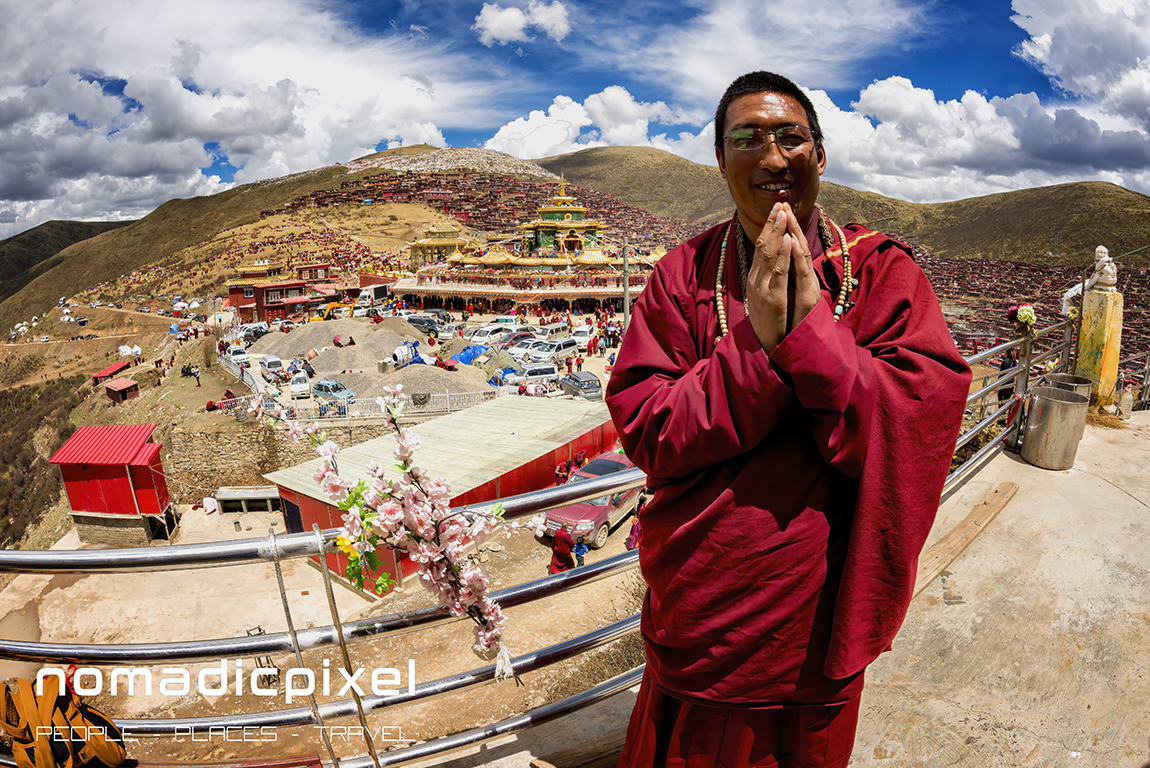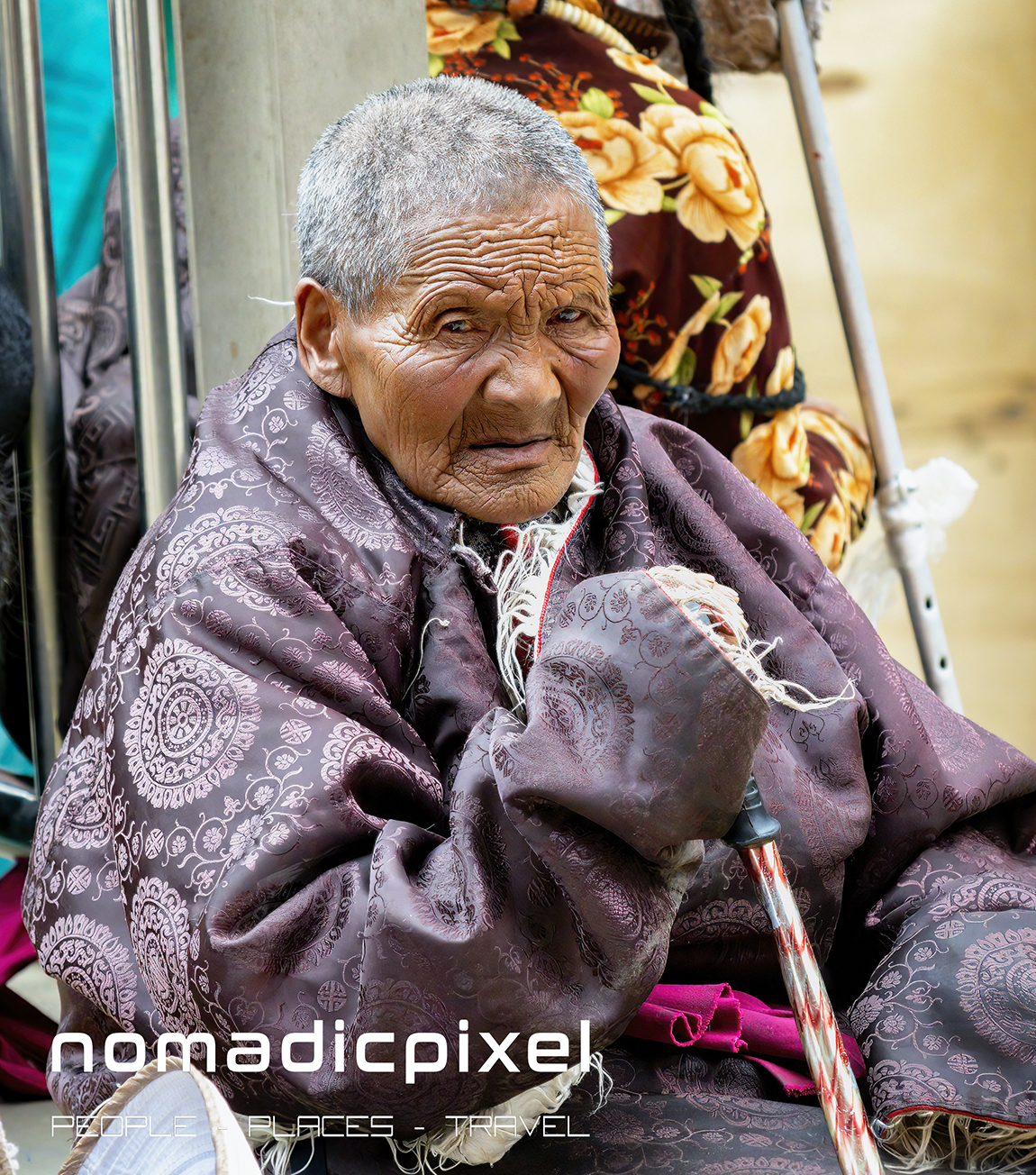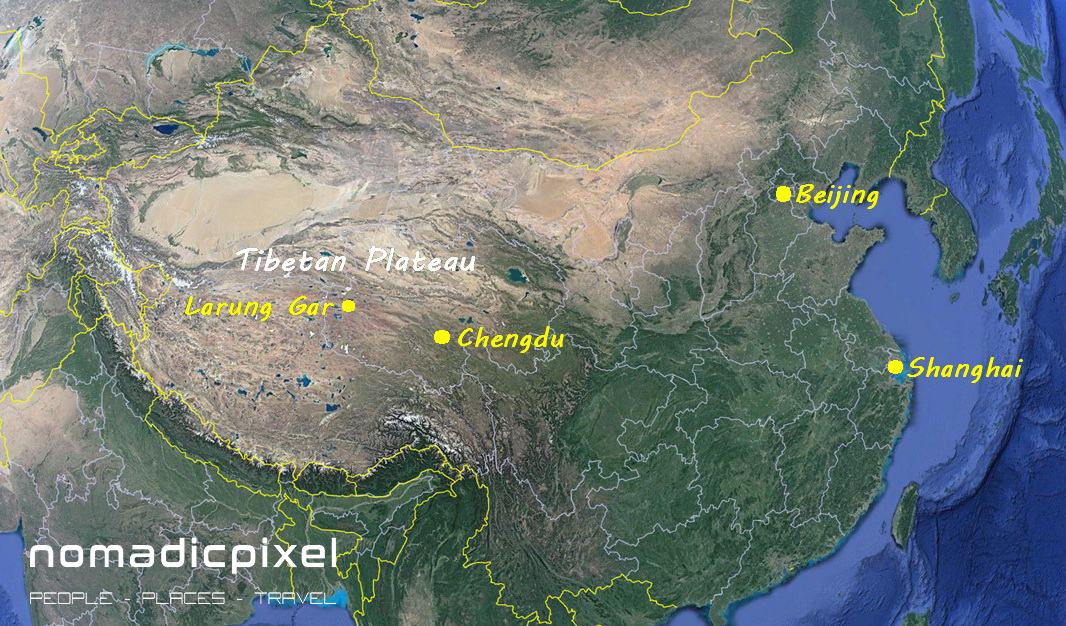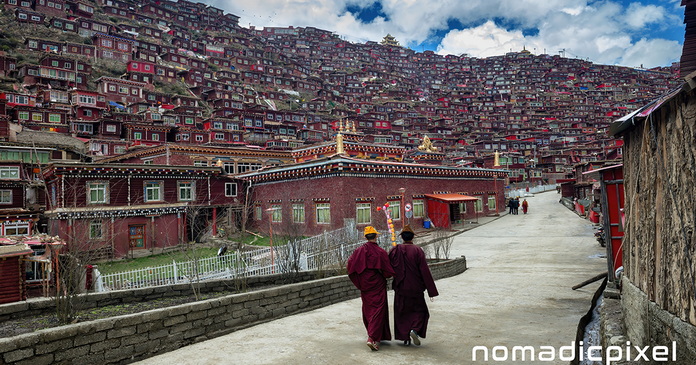Photographing Larung Gar… I must be upfront and say that I really had no idea of what Larung Gar was, or how to get there. What I did have was an invite from my friend (still is) and colleague (no longer…) Jun Quan.
Jun and I had worked together a lot over the years and traveled extensively around China – on business. Then the year before we decided to take some vacation and travel up to the remoter parts of the Tibetan Plateau in Sichuan. It was a great trip for me as I was traveling with a good friend, in his SUV, to places that would have been very difficult to get to by myself. Not to mention the language barrier – almost nobody spoke English there!
So, when he told me about a trip to Larung Gar, I just said yes… But getting there turned in to the toughest journey I have ever done in China.

Photographing Larung Gar – What Is It?

Larung Gar is a Buddhist institute, founded by Khenpo Jigme Phuntsok, a lama of the Nyingma school of Tibetan Buddhism.
Jigme Phuntsok was born in 1933 to a nomadic Tibetan family in the south-east of Qinghai province. And first came to prominence at just 5 years old when he was recognised as the reincarnation of a guru to the 13th Dalai Lama..
Soon after he entered Nubzur Monastery in Sêrtar, beginning his lifelong career as a Buddhist monk. Later becoming a renowned and respected “terton” or revealer of lost Tibetan terma (treasure)…
In 1957, at the age of just 24, he became the khenpo (abbot) of the monastery. But those were difficult times for Buddhism on the Tibetan Plateau and they would get worse during the Cultural Revolution.
So, in 1959 Jigme Phuntsok retreated to the remote Sêrtar mountains. Where, together with a small group of monks, they engaged in Dzogchen meditation and practiced the traditional form of Buddhism Nyingma is known for.
Over time the word spread and in in 1980 Jigme Phuntsok and his followers moved to the remote Larung Gar valley.
Where they established a ritro, or mountain hermitage, to teach Dzogchen meditation and Nyingma Tibetan Buddhism.
Where Is Larung Gar?

Larung Gar is located in a remote valley of Sêrtar County in the Garzê Tibetan Autonomous Prefecture of Sichuan.
That general part of the Tibetan Plateau is known as Kham and covers a area of about 900,000 km² – or roughly the same size as Nigeria!
The nearest major city is Chengdu, which is where we started our trip to Larung Gar from. It’s not an easy journey though and ours took two days, with an overnight stay in the city of Ma’erkang.
Apparently it is possible to go by bus, but that would definitely not be a journey for the faint of heart!
The road reconstruction that made our trip so difficult is said to be complete now. So much easier to get to Larung Gar, but the big question is it open to visitors?
Photographing Larung Gar – First Impressions
Basically I had never seen anything quite like Larung Gar. So much so that I struggled to take it all in initially. The row upon row of small wooden cabins arrayed around the valley was simply astonishing. High density living in a remote valley on the Tibetan Plateau…
![]() It’s kind of hard to believe that it all started with a single, very simple dwelling on the hill. Which Jigme Phuntsok and his followers built when they moved to the valley.
It’s kind of hard to believe that it all started with a single, very simple dwelling on the hill. Which Jigme Phuntsok and his followers built when they moved to the valley.
The hundreds of cabins that now cover the valley were built by the people who came to Larung Gar to study.
All because the institute enjoys a unique reputation and draws students from all over the Tibetan Plateau and greater China. And largely based on teaching traditional Dzogchen meditation and Nyingma Buddhism.
The exact number of people at Larung Gar varies widely. Depending upon where you look for that answer… But the most consistent total seems to be about 10,000 – consisting of mainly Tibetan monks and nuns. Although some 10% are apparently Han, or ethnic Chinese.
A number of 40,000 is also widely disseminated, but that seems unlikely.
Overall and, admittedly based on limited time at Larung Gar, the impression that formed was that the people I saw were engaged in something they considered very important to them. There was a sense of real purpose. And you could sense an intensity that was tangible, but hard to explain!
Larung Gar – An Alternate Reality…
![]() I consider myself incredibly fortunate to have been visiting China regularly since 2002. Plus I was was based in Shanghai for almost two years in 2008 and 2009.
I consider myself incredibly fortunate to have been visiting China regularly since 2002. Plus I was was based in Shanghai for almost two years in 2008 and 2009.
All of which has allowed me to travel extensively across the country. And it has been simply amazing to see first-hand how China has modernized so rapidly!
But the reality of that is the major cities all start to look a bit like each other. New airports, metros, highways and gleaming glass and steel skyscrapers are all the new normal now.
In those cities you have to seek out areas of the “old China”. And you have to be quick as they are also dissapearing as land becomes more valuable. So, these days I tend to minimize the time I spend in the cities.
Instead I want to see as much as I can of what (to me…) makes China so special – before those places dissapear or get “Disneyfied“. And it really does not get much more special than Larung Gar. It’s a truly amazing place!
What’s Special About Larung Gar?
Quite a lot is the short answer… Starting with its remote location, the difficulty of getting there and the sheer improbability of it all! Boiling it all down though if I had to pick just a couple of things it would have to be the place itself and the people.
The fact that so many people have gravitated to this remote valley high up on the Tibetan Plateau tells you a lot about what Jigme Phuntsok and his followers have established. And clearly there is something very powerful about traditional Dzogchen meditation and Nyingma Buddhism!
Oviously the conditions the majority of the attendees at Larung Gar live in are quite basic. But it did not appear to matter that much. At least on the day I was there – although I suppose it might be a bit different on a bitterly cold winters day.
From a purely western and materialistic perspective it is easy to associate basic living conditions with dissatisfaction. After all, much of what we imbibe on television, movies and social media, condition us to want more.
But I also did not see any TV antennas or satellite dishes at all at Larung Gar. And again the distinct impression I had was that it just did not matter!
To me this intensity of purpose that almost everybody I saw at Larung Gar seemed to have made the people really interesting. Their colorful robes and the amazing backdrop made them even more so.
Photographing Larung Gar – In Summary…
My trip to Larung Gar was worth all the trouble and difficulty of getting there. The only issue really though was one day was nowhere near enough time! I had every intention to go back there and stay for at least a few days, but trying to get information on how to book accommodation there was really tough.
Then word filtered out about a local government crackdown on the institute with strict instructions to reduce the number of students to no more than 5,000. With 3,500 of those to be nuns and 1,500 to be monks. Then it seems that the whole area was closed completely to all foreigners… So I never made it back, but if Larung Gar does open again to foreigners I will definitely go back – it’s that special!

Leave a Reply